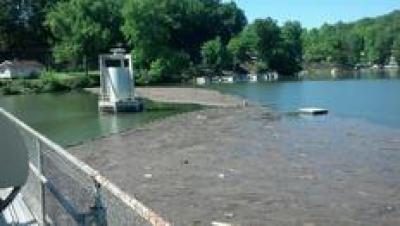Who Cleans the Lake after a Storm?
It's a little-known operating procedure in Lake Lure - that is, until there is a heavy storm.
Then local residents want to know, "who will clean up this mess?"
The answer is your Parks, Recreation, and Lake Department through its Standard Operating Procedures for handling debris clean-up after a large storm/flood event.
Depending on the severity of a storm and how quickly the town can safely get on the lake, the cleanup can take days or weeks.
The amount of debris determines how much time and resources are going to be needed to remedy the issue.
Smaller sticks and limbs, as well as floating debris, may be present for longer. But in time, it flows toward the dam and through the trash gate, downriver.
The trash gate is monitored so that certain types of debris, such as plastics, barrels, propane tanks, cars, and camper trailers, can be removed before going into the river below.
The Clean-Up Procedures Are As Follows:
- We have found that our cleanup efforts are most effective when we wait 2-3 days for the debris field to move east down the lake, to consolidate, and to allow the smaller debris (sticks, leaves, wood chips, etc.) to drop out and sink.
- Town staff then takes workboats designed for debris removal and collects larger debris such as logs, tires, tees, and tanks.
- Priority is given to the main navigational channels of the lake, coves, and then the shoreline.
- Property owners are asked to help in this process by collecting debris around their docks/boathouses and placing it on their land or docks, after which they may call Town Hall at (828)-625-9983 ext 505 to be put on a debris cleanup list. Staff will come to your residence to remove the debris.
- After storm/flood events, please use the lake only at your own risk and use extreme caution. Submerged logs and debris can be anywhere and cause damage or injuries.
- When debris reaches the dam, a debris barrier channels the debris to the trash gate, protecting the intake for the hydroelectric generators. The trash gate is monitored so that certain types of debris can be removed before going into the river below. The natural woody debris is released through the trash gate.


